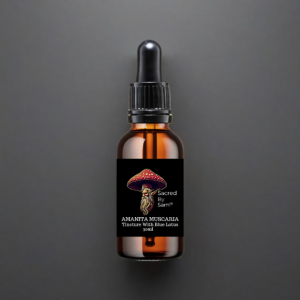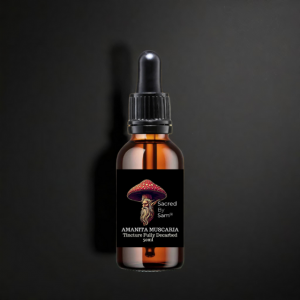Benzodiazepine withdrawal can be a long, grueling journey marked by anxiety, insomnia, muscle tension, and sensory hypersensitivity. Many people report that standard tapering protocols don’t fully address the emotional and neurological intensity of the process. In recent years, some individuals have turned to alternative substances to ease this transition—including the mysterious and often misunderstood mushroom, Amanita muscaria.
But can Amanita muscaria genuinely help with benzo withdrawal? Let’s take a closer look at what we know—and what we’re still learning.
🌿 What Is Amanita Muscaria?
Amanita muscaria, also known as the fly agaric mushroom, is iconic for its red cap and white spots—straight out of a fairy tale. Unlike psilocybin mushrooms, Amanita muscaria is not a psychedelic in the traditional sense. Its active compounds are muscimol and ibotenic acid, which interact primarily with the GABA-A receptors—the very same receptors affected by benzodiazepines.
This GABAergic interaction is where the potential for easing withdrawal symptoms may come into play.
🧠 How It Might Help: GABA and Neurological Rebalancing
Benzodiazepines work by enhancing GABA activity, the brain’s primary inhibitory neurotransmitter. Over time, this suppresses the brain’s natural GABA production. When someone stops taking benzodiazepines—especially after long-term use—this can result in an overexcited nervous system, causing symptoms like anxiety, insomnia, tremors, and even seizures.
Muscimol, one of the primary compounds in Amanita muscaria, is a GABA-A receptor agonist. This means it can mimic some of the calming effects benzodiazepines provide—without being chemically addictive in the same way.
Some anecdotal reports suggest that carefully dosed use of Amanita muscaria may:
Ease anxiety and restlessness
Improve sleep quality
Soothe physical discomfort and muscle tension
Provide a sense of calm without strong sedation
Reduce sensory overstimulation during acute withdrawal
📖 What the Anecdotal Evidence Says
While clinical research is scarce, online forums and communities have seen a rise in first-person accounts from individuals who credit Amanita muscaria with helping them through difficult phases of benzodiazepine withdrawal. Many report microdosing dried or extract-based preparations to avoid the dissociative effects that can occur at higher doses.
Some describe the experience as gently calming—”like a warm blanket for the nerves”—and far less disruptive than either pharmaceutical alternatives or abstinence alone.
⚠️ Caution Is Crucial
While the potential is promising, it’s essential to approach Amanita muscaria with respect and care:
Dose matters: High doses can cause confusion, dissociation, nausea, or delirium.
Preparation matters: Drying or decarboxylation can reduce ibotenic acid (which can be neurotoxic in high amounts) and increase muscimol (the desired compound).
Individual biology matters: Responses vary greatly, especially in people with sensitive nervous systems or co-occurring conditions.
Never mix with other depressants: Combining Amanita muscaria with benzos, alcohol, or GABAergic drugs can be risky or even dangerous.
✅ Tips for Exploring Safely (If You Choose To)
If you’re considering trying Amanita muscaria to support benzo withdrawal, here are a few basic guidelines:
Start low: Begin with very small doses—many find that 150–300mg of dried caps is enough for subtle effects.
Track effects: Keep a journal to monitor your response over time.
Use trusted sources: Make sure your mushrooms are properly identified and prepared.
Consult a professional: Work with a knowledgeable integrative practitioner, especially if you’re tapering or managing withdrawal.
🌌 The Future of Natural Withdrawal Support?
We’re only beginning to explore the therapeutic potential of compounds like muscimol. While Amanita muscaria won’t be a magic bullet, it might offer gentle support when used thoughtfully. Its interaction with GABA-A receptors, calming effects, and non-addictive nature make it a compelling subject for future research into managing withdrawal from substances like benzodiazepines.
As always, healing is not one-size-fits-all. But for some, the ancient mushroom of myth and folklore may hold unexpected promise on the road to recovery.
Disclaimer: This blog is for informational purposes only and does not constitute medical advice. Always consult with a qualified healthcare provider before beginning any new treatment, especially during medication tapering or withdrawal.
Related Products
Amanita Muscaria Full Spectrum With Blue Lotus Tincture
Price range: £34.95 through £104.95Amanita Muscaria Fully Decarbed Tincture
Price range: £29.95 through £98.95


